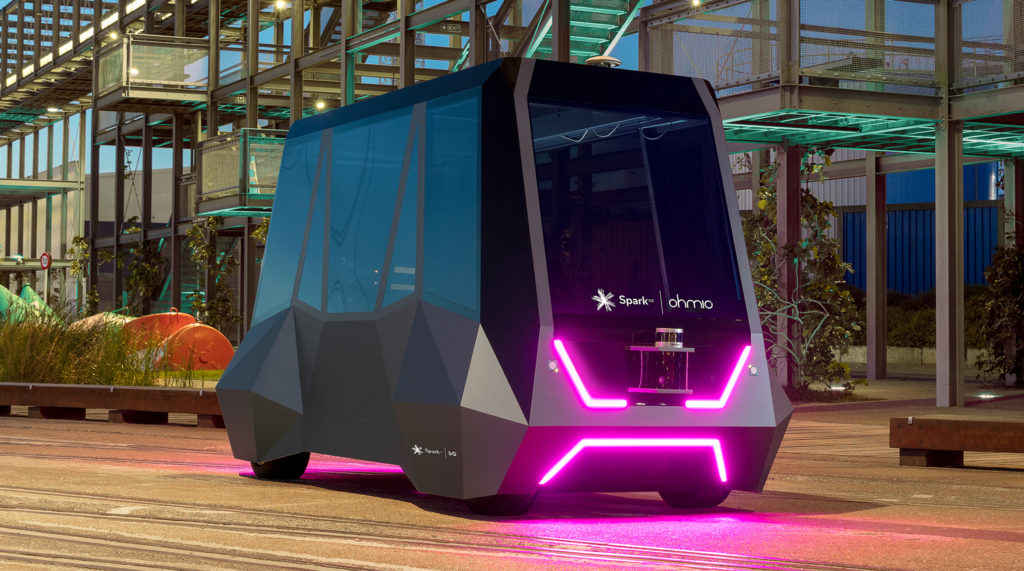Autonomy has arrived on the streets of New Zealand as the country’s first 5G connected driverless car is tested in Auckland.
The self-driving pod is a result of a collaboration between communications company Spark New Zealand and Ohmio Automotion, which has been previously trialling autonomous vehicles at Christchurch airport.
Following these early trials, the vehicles have been upgraded with new technology to allow them to integrate with Spark’s 5G test network.
Using a tablet, passengers are able to hail the car, and once inside, a dashboard tells them what the car is monitoring in real time. The vehicle uses Velodyne lidar technology to help navigate the surrounding environment.
The first 5G trial was carried out in a controlled area at Auckland’s Wynyard Quarter Innovation Precinct with the ability to carry up to four people at speeds of up to 25km/h. However, this will be capped at 7km/h during the pre-programmed route, which lasts approximately seven minutes.
“We believe this test with Spark is only the second of its type in the world. Today (March 13) has demonstrated some of the exciting opportunities 5G will enable for our autonomous car technology,” said Dr Mahmood Hikmet, Ohmio’s head of research and development.
“A 5G network can be up to 100 times faster than 4G, which unlocks the true potential for autonomous driving, as messages need to be transmitted and decisions made in real time. A significant drop in latency – or the reaction time when one device talks to another – will give cars human-like reflexes and opens up multiple possibilities for connected infrastructure and a smart city ecosystem.”
Ohmio plans to launch more driverless cars in more closed facilities across New Zealand, including airports, university campuses, retirement villages and hospitals.
Ohmio plans to gain on-road certification and look for opportunities to use the cars on public streets alongside regular vehicles. One example of this is a first- and last-mile solution to carry people short distances and provide a connection to or from transportation hubs, reducing the need for park-and-rides.


